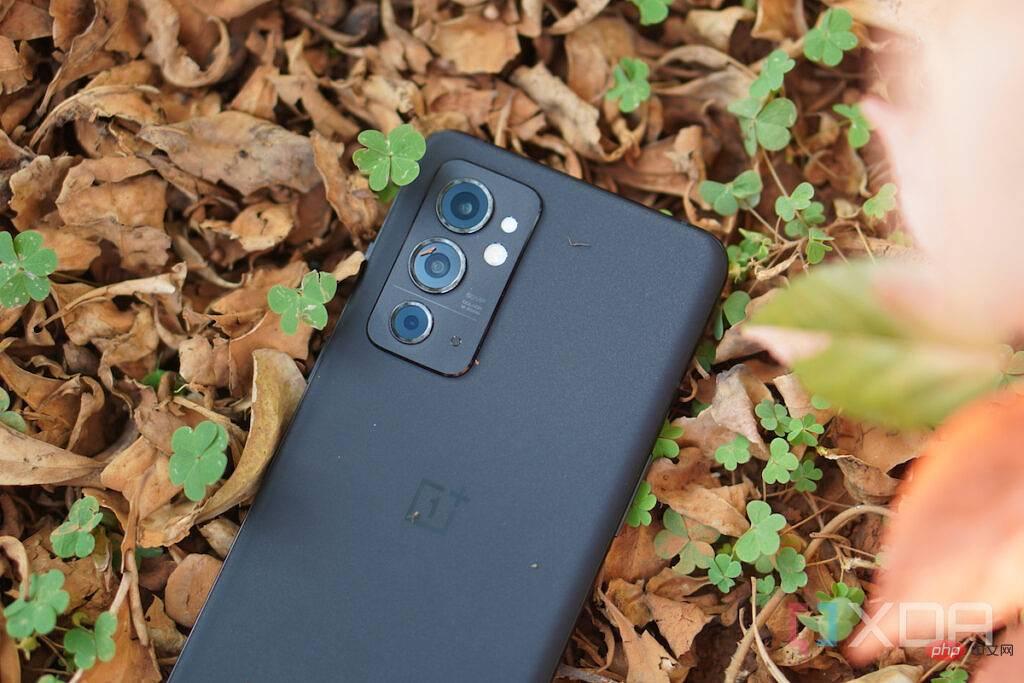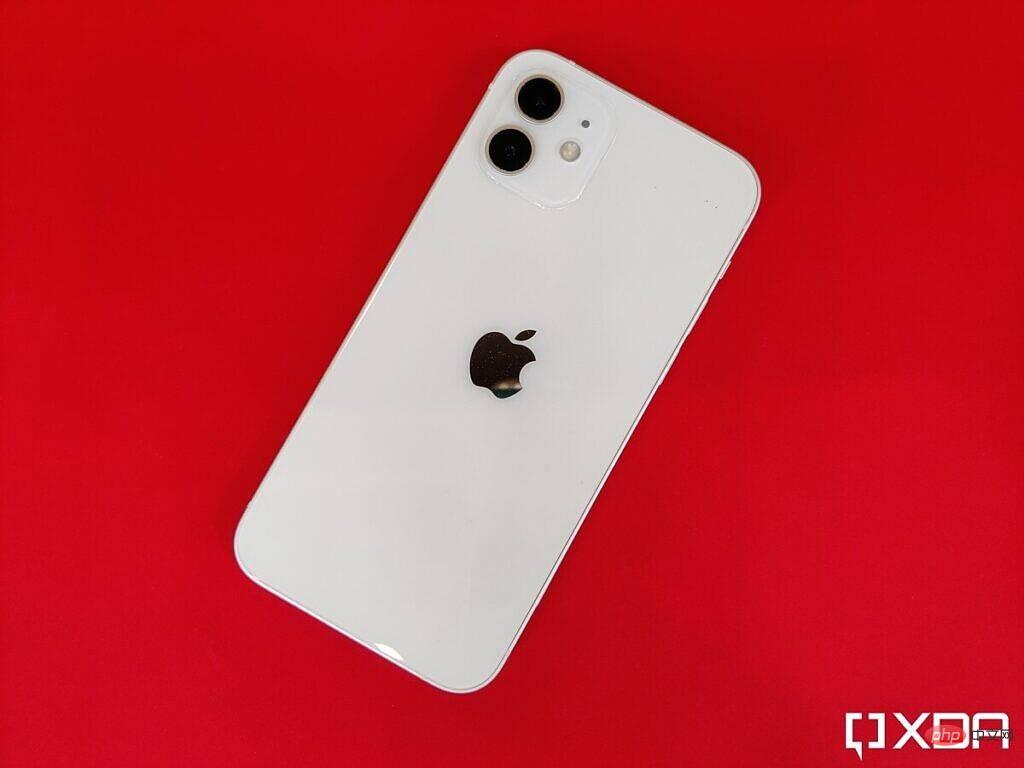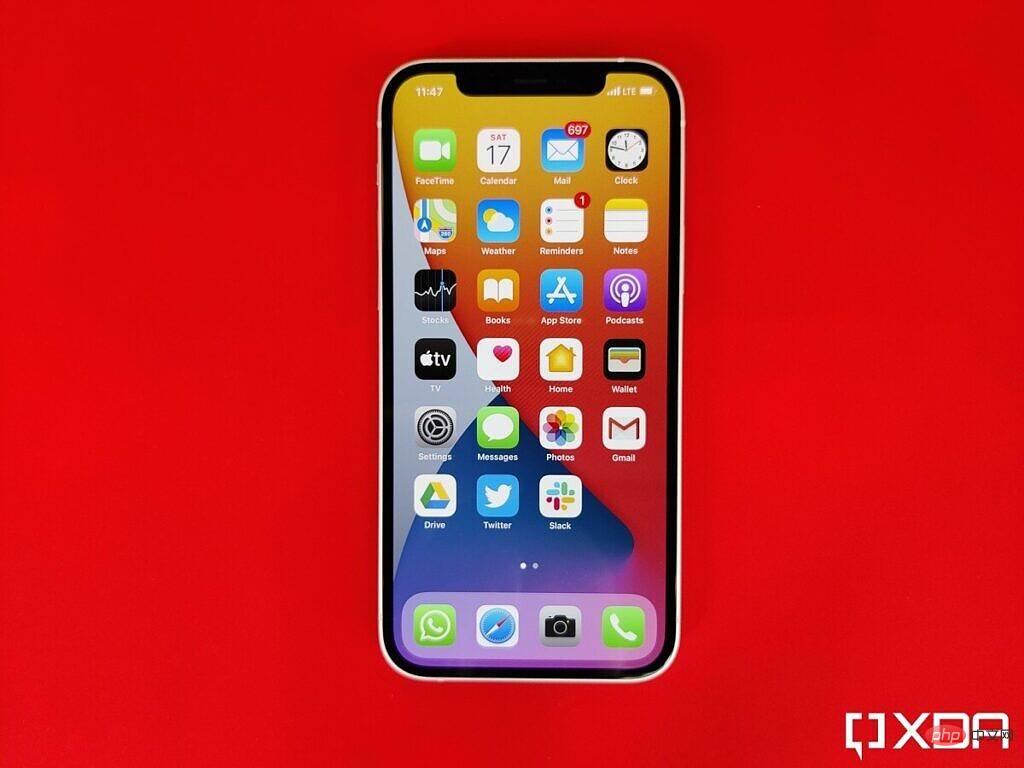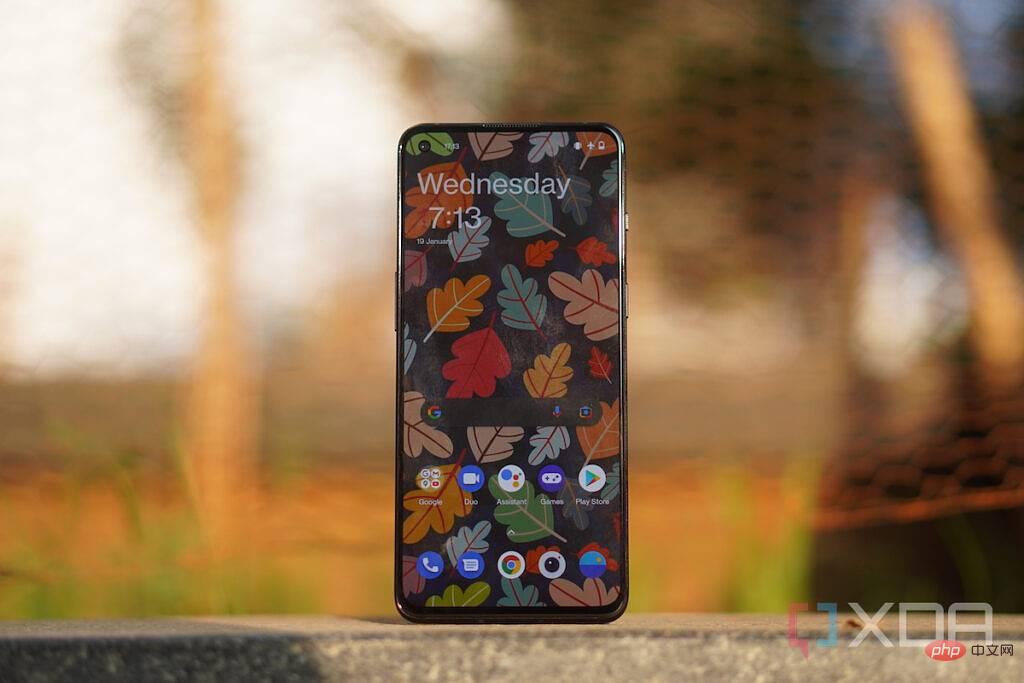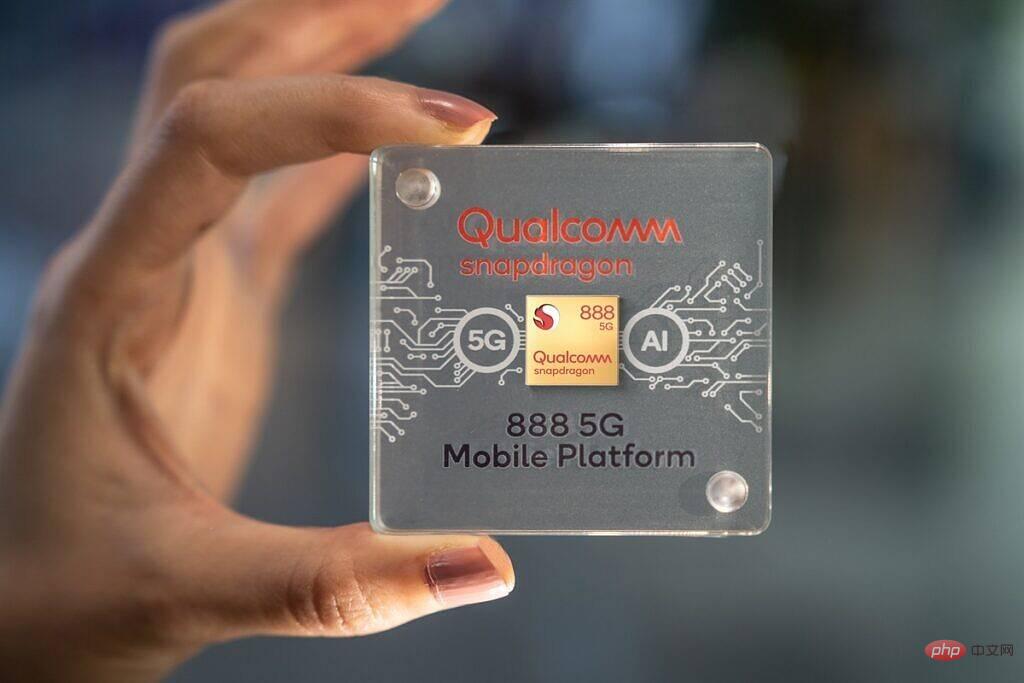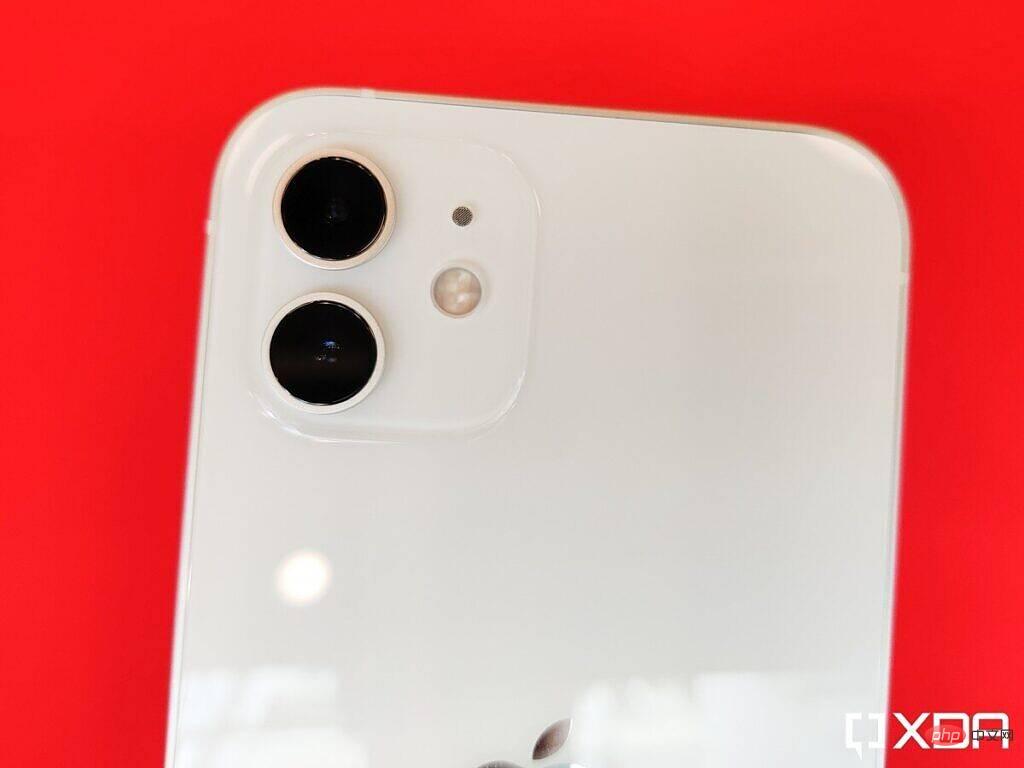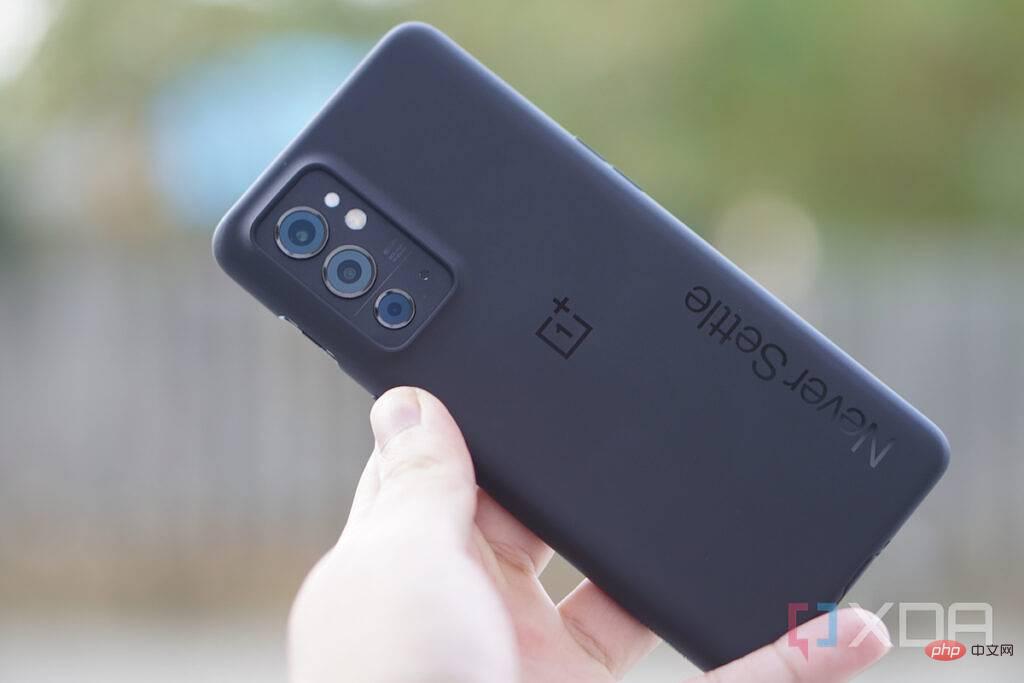OnePlus 9RT vs. Apple iPhone 12: Which smartphone should you buy?
Apr 14, 2023 pm 05:25 PMOnePlus 9RT vs Apple iPhone 12: Specifications
| ##OnePlus 9RT | Apple iPhone 12 | |
|---|---|---|
| CPU |
|
|
| 163.2 x 73.2 x 8.7 mm197g |
|
|
| 6.62-inch FHD Samsung E4 AMOLED2400 x 1080p | 120Hz refresh rate
|
60Hz refresh rate
|
| Ultrawide: 16MP, f/2.2 | Macro: 2MP, f/2.4
| Front: 12MP, f/2.2
|
| 128GB/256GB Storage |
|
|
| 65W fast charging |
|
15W MagSafe charging
| ##5G
| Wireless Network 6 | Bluetooth 5.1
| Bluetooth 5.0
|
| ##Security | Display fingerprint ScannerFace Recognition | |
| You | ColorOS 12 based on Android 11iOS 15 | |
| Color | Silver | Black |
| Black |
| Blue
|
| Glass back | Aluminum frame
|
Starting at $512
Build and DesignThe OnePlus 9RT and Apple’s iPhone 12 are very different in terms of build and design. First, the OnePlus phone is made of plastic, while the iPhone 12 is made of aluminum. Both phones have glass backs, though, so you have to be careful about accidental drops. The iPhone gets bonus points here because its construction is aluminum, while the OnePlus phone's construction is plastic. The OnePlus 9RT's back is matte, And the back of the iPhone 12 is shiny. This gives OnePlus a plus as fingerprints and scratches won’t be that noticeable. It's worth mentioning, though, that the iPhone has a more premium look thanks to a neat, bright glass panel. It reminds us of the iPhone 4 era, with a high-end look and feel.
# In terms of design, both phones have vertically arranged rear cameras with a noticeable bump. If we look at the front, OnePlus 9RT has a punch-hole camera on the front while Apple has a long notch on the front. They both have thin bezels, but the OnePlus phone has a chin. When it comes to the punch hole/notch debate, the matter is purely subjective. Some people prefer the former, while others adapt to the latter more quickly. Ultimately, these devices look completely different - which one appeals to you depends on your personal taste. It's worth noting, though, that the iPhone comes in six colors, compared to the OnePlus 9RT's two. Showcase In terms of quality, the iPhone 12 objectively beats the OnePlus 9RT. The former has a higher resolution of 2532 x 1170p compared to the latter's 2400 x 1080, but you're unlikely to notice the extra pixels in day-to-day use. However, the OnePlus beats the iPhone 12 in a few other areas.
The OnePlus 9RT sports a larger 6.62-inch display, beating out Apple’s 6.1. Additionally, it has a 120Hz refresh rate – double the iPhone’s 60Hz refresh rate. This makes scrolling lists and some animations smoother. However, some may think the larger display is a con. So it really depends on your priorities and what you're looking for in a mobile screen to decide which phone's display is better for you. Speaking of the display, the OnePlus 9RT comes with an optical in-display fingerprint sensor. This allows you to unlock your phone by placing your registered fingertip on the actual screen. Face ID, on the other hand, is a safeguard for the Apple iPhone 12 . Considering we're in the middle of a pandemic that requires masks, many people will prefer a fingerprint reader over facial recognition. However, if you're deep into the Apple ecosystem, you can use your Apple Watch to unlock your Face ID iPhone while wearing a mask. The A14 Bionic beats the Snapdragon 888 in both single-core and multi-core CPU performance tests. Additionally, it is more efficient in terms of battery consumption and has 9% faster CPU clock speeds. However, the Snapdragon 888 outperforms the A14 Bionic in gaming performance. It scores higher for GPU performance in gaming and OpenCL/Vulcan. Additionally, it has two cores, supports 20% more memory bandwidth, and delivers 10% better AnTuTu scores (while consuming more battery).
If you plan on actively using your new phone for gaming, then you might want to consider the OnePlus 9RT. That’s not to say the iPhone 12 isn’t a great gaming phone, though. The A14 Bionic chip still has a higher overall score and is a gentler drain on your precious battery power. Ultimately, they're all flagship processors released in late 2020 - so they're not the latest, but they're still powerful and capable. CameraCameras can be a major selling point for a certain type of user. I've personally met people who would only ask "does it take good photos?" before purchasing the equipment (if they received a positive answer from the seller). On paper, we have a clear winner – the OnePlus 9RT. To break down the cameras of both devices, let's start with the front. Both phones have a front-facing camera. The OnePlus 9RT's 16MP beats Apple's 12MP, but Apple's aperture is f/2.2, beating the OnePlus phone's f/2.4.
In terms of rear cameras, OnePlus has three, while the iPhone only has two. They both have a main lens and an ultra-wide-angle lens, but the OnePlus 9RT has a macro lens as a bonus. The stock lenses on the iPhone 12 are rated at 12MP, while OnePlus bumps them up to 50MP and 16MP respectively. However, the iPhone 12’s main camera has a better aperture.
OnePlus 9RT comes with a 2MP macro lens. Plus, it takes great selfies thanks to the significantly better front-facing camera. So if you want to take better photos, you might want to consider buying a OnePlus phone, which has more—and in some cases—better cameras. Battery Life and ChargingCompared to the iPhone 12, the OnePlus 9RT has a larger battery and supports higher wattage for wired charging. However, the former lacks wireless charging, which may be a deal-breaker for many. In addition to Qi wireless charging, iPhone 12 also supports MagSafe – wireless charging and accessories.
Apple says the iPhone 12 can provide up to 65 hours of audio playback and 17 hours of offline video playback on a single charge. Obviously, these numbers vary depending on your setup, environment, and usage. OnePlus didn't share similar statistics, but it's a safe bet that you won't need to charge either device more than once a day. Ultimately, none of them have terrible battery life. Considering the iPhone’s wireless charging capabilities and the OnePlus 9RT’s faster wired charging, this round is a tie — as some users prefer faster wired charging over Qi support, and vice versa. |
The above is the detailed content of OnePlus 9RT vs. Apple iPhone 12: Which smartphone should you buy?. For more information, please follow other related articles on the PHP Chinese website!

Hot Article

Hot tools Tags

Hot Article

Hot Article Tags

Notepad++7.3.1
Easy-to-use and free code editor

SublimeText3 Chinese version
Chinese version, very easy to use

Zend Studio 13.0.1
Powerful PHP integrated development environment

Dreamweaver CS6
Visual web development tools

SublimeText3 Mac version
God-level code editing software (SublimeText3)

Hot Topics
 deepseek ios version download and installation tutorial
Feb 19, 2025 pm 04:00 PM
deepseek ios version download and installation tutorial
Feb 19, 2025 pm 04:00 PM
deepseek ios version download and installation tutorial
 Why can't the Bybit exchange link be directly downloaded and installed?
Feb 21, 2025 pm 10:57 PM
Why can't the Bybit exchange link be directly downloaded and installed?
Feb 21, 2025 pm 10:57 PM
Why can't the Bybit exchange link be directly downloaded and installed?
 Sesame Open Door Trading Platform Download Mobile Version Gateio Trading Platform Download Address
Feb 28, 2025 am 10:51 AM
Sesame Open Door Trading Platform Download Mobile Version Gateio Trading Platform Download Address
Feb 28, 2025 am 10:51 AM
Sesame Open Door Trading Platform Download Mobile Version Gateio Trading Platform Download Address
 How to enable Douyin's beanbao function
Nov 28, 2024 pm 07:39 PM
How to enable Douyin's beanbao function
Nov 28, 2024 pm 07:39 PM
How to enable Douyin's beanbao function
 Binance binance official website latest version login portal
Feb 21, 2025 pm 05:42 PM
Binance binance official website latest version login portal
Feb 21, 2025 pm 05:42 PM
Binance binance official website latest version login portal
 Gate.io trading platform official app download and installation address
Feb 13, 2025 pm 07:33 PM
Gate.io trading platform official app download and installation address
Feb 13, 2025 pm 07:33 PM
Gate.io trading platform official app download and installation address
 gate.io sesame door download Chinese tutorial
Feb 28, 2025 am 10:54 AM
gate.io sesame door download Chinese tutorial
Feb 28, 2025 am 10:54 AM
gate.io sesame door download Chinese tutorial
 How to find the download link of Ouyi okx Android and Apple
Feb 21, 2025 pm 05:39 PM
How to find the download link of Ouyi okx Android and Apple
Feb 21, 2025 pm 05:39 PM
How to find the download link of Ouyi okx Android and Apple



